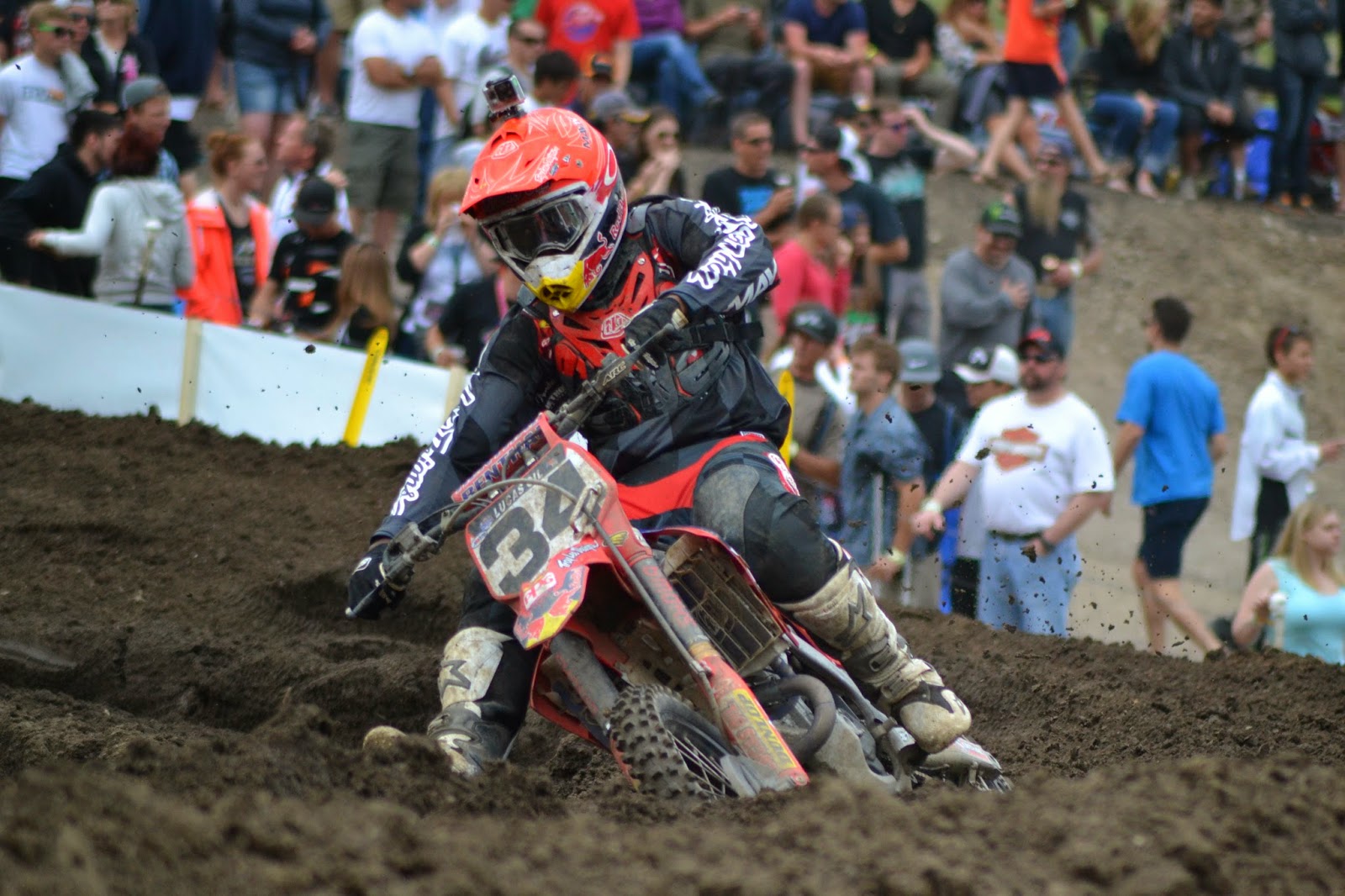 |
| Photo: racerxonline / cudby |
A friend and
I were sitting at a bar in Boulder with a supreme view of the Flatirons,
sipping on a couple of Moscow Mules from a copper mug while sharing our best
mountain bike stories when the conversation turned to motocross. The debate revolved around my TRAP scoring
and why the leader rarely has the highest score.
Great
question I told him but the answer is really quite simple, I replied. Of course I had to answer his question with a
question; is the winner always the best and fastest rider on the track? He thought about it for a moment and answered
yes, of course, he won. Wrong! There is only one absolute in racing; the
winner of a race is always without question the first to cross the finish line.
Want
proof? Just listen to the riders themselves. Every week they give us their secret; a good
start. So why is that? Because they know there is a distinct
advantage for running up front. For one,
first place has one race and that’s to protect his position. Everyone else, except for last place, has 2
races; protect his position and gain a position, never mind the Roost and every
other hazard that comes with running from behind. So when you think about it you have 40
individual races going on at the same time.
Here’s the twist though, when normalized, the leader has nearly maximized his competitive
advantage. His response; whatever.
I live in
Colorado but the local riders I’m sure have no idea I exist but I keep up as
often as I can so you can imagine how thrilled I was to see one of our local
guys score big last weekend. Bobby Fitch
has no idea who I am but he had earned the top spot on my 450 TRAP this week,
easily outscoring some of the top riders in the world; kudos my man.
So now let’s
take a look at Moto 2 in the 450 class.
It’s important to remember that we’re talking about relative
performance, or how a rider did relative to his peers and not how he did
against his peers. At first glance you’ll
see that Fitch scored highest on the grid followed by Lamay, Canard, Peick, Mikhaylov,
Reed, McConahy, Tedesco, Endicott and James Stewart to round out the top
10. When we isolate performance further
we find the largest concentration of riders outside tier 3; 57.5% to be exact. We can conclude from these numbers that
Fitch, Lamay and Canard had noteworthy rides in terms of personal effort and
relative performance.
Tier 1 – 5%
Tier 2 – 15%
Tier 3 – 22.5%
Tier 4 – 27.5%
Tier 5 – 5%
Tiers 6 thru
8 – 25%
The fact that
most riders fall outside the top tiers is of course no revelation, some riders
possess far superior equipment and resources than others but over time we
should be able to determine an Equivalent Average (EqA) for each rider and if I
were a team manager I would look at riders who score consistently in the higher
ranges of these EqA’s and let them have a run on a factory machine.
Perhaps you’re
starting to get a sense of the level of complexity that goes into building and
maintaining a professional motocross team and I believe to build a solid team
you need to look past lap times and box scores.
Over the next few weeks I’ll be working on an Empirical Comparison and
Optimization Test Algorithm (PECOTA) for forecasting rider performance – this is
a system used in baseball so it’ll be interesting to see if it can be applied
to motocross.
For the
casual observer most of this may sound about as fun as bamboo shoots being
jammed underneath your fingernails but if you’ve ever had the desire to be part
of a pro motocross team, having deeper knowledge of racing wouldn’t hurt. There are no guarantees in racing; the best
we can do is improve our chances.
Thanks for
clicking in and see you in Colorado,
The Roost'r





